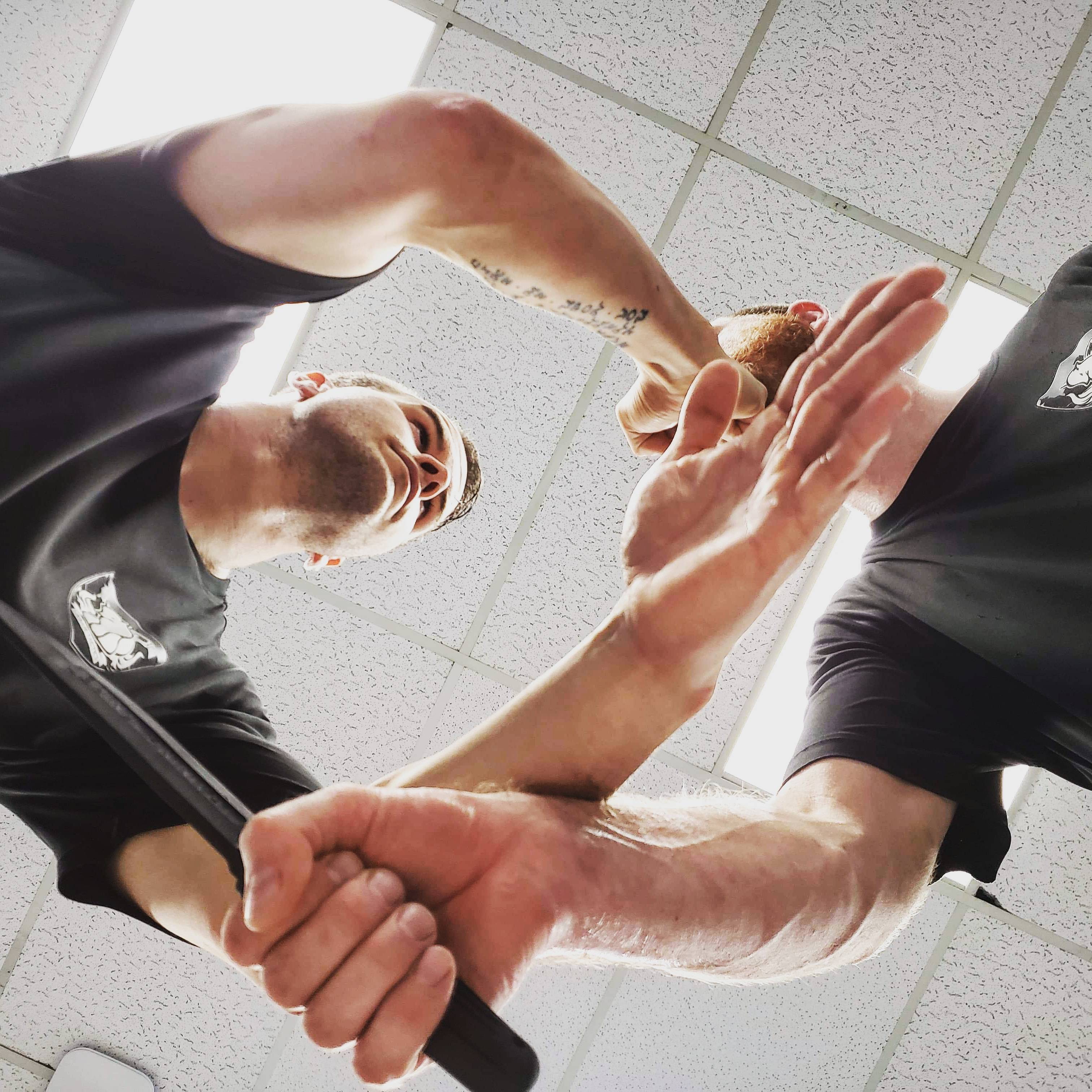
There are steps you can take to protect yourself in the event of a physical attack. These include staying away from distractions, conserving your energy, and getting out of a wristlock. These tips can help you to protect yourself in many situations. These are the best ways to protect yourself from an attack. You may find this information useful if ever you are under attack.
To protect yourself against attackers, it is important to avoid distractions
Not only is it important to learn how distractions can help you defend yourself, but they can also be detrimental in fights. You are most likely being distracted by the aggressor, which prepares him or her for a specific type attack. The more distractions you provide an attacker, the more likely they will turn around. Here are some ideas on how to use distractions in self-defense.
Energy and fatigue are not good options for an attacker
Self-defense principles work off the mat, too. If you're stronger than the attacker, you can employ defensive tactics to keep your energy down and make it out. If you are oppressed by an attacker or have been negatively impacted by it, you should make the most of this opportunity to conserve your energy. You must also be ready to take advantage of any openings. You can also use defensive techniques, such as evasion, to release energy and help you escape the situation.

To temporarily blind an attacker, jab them in the eye
If you are in a fight and you're wondering how to jab an attacker in the eye to blind them temporarily, here are some tips. First, it's important to remember that hitting someone in the eye can result in death. Second, you should not do it in a fight where your opponent is not armed. A direct blow to the Adam’s Apple can prove fatal. You should also remember that fighting in a schoolyard, or tussling among friends, shouldn't cause any serious harm to your self. However, if you find yourself in an unsafe situation, aggressive fighting can be a way to escape.
Escape the wristlock
If your attacker holds your wrist tightly, you might be able to free yourself from the wristlock by grasping your attacker's dominant hand with the non-dominant and driving it into your neck. This maneuver will require you to lock your elbow and rotate your shoulder to extend your arm forward as powerfully as possible.
To temporarily blind someone, kick an attacker in the groin.
There are two common ways to knock an attacker unconscious. The first is to strike their groin. This is the place where the collarbones intersect. The throat can temporarily stop the attacker's breath. Another way is to kick an attacker in their groin. They are the most vulnerable. This attack will damage their testicles, but the target is difficult to hit from the ground.

FAQ
Is Cardio Better Than Strength Training?
Both are equally good. For those who want to gain muscle quicker, cardio is a better choice.
Cardio burns more calories per minute than strength training and burns more fat.
Although strength training can increase muscle mass, it is more difficult than cardio to do so.
What's a good workout plan for 7 days?
A seven-day exercise program should consist of three days per week of cardiovascular training (running, biking, swimming), two strength exercises (using free weights, weight machines), and one flexibility/core workout (yoga, Pilates). Each activity should be done at least once per week. The total time for each session should not exceed 45 minutes.
Cardiovascular Exercise: Running/Biking/Swimming
It is important to complete at least 60 minutes of cardio per week. For best results, aim for 75 minutes per week. Cardio exercises can be used to increase blood flow, stimulate muscle growth, and improve blood circulation.
Strength Training
Cardio exercises work on the heart and lungs. Strength training works on the muscles and bones. Strength training is a great way to build lean muscle mass that helps you burn calories even if you are not actively exercising.
Flexibility & Core Workouts
To strengthen your whole body, flexibility and core work outs are excellent ways to do so. Both yoga and Pilates can be great choices.
What is the best work out for men aged 40+?
Older men often have more energy and stamina when they exercise.
It is important that you note that people over 40 experience a decrease in testosterone levels, which results in lower sex drive.
However, this doesn't mean you cannot still enjoy physical activity. There are many studies that show regular aerobic exercise can raise testosterone in some men.
You can improve your sexual performance by starting an aerobics program.
Statistics
- Get free shipping and 25% off today. (healthline.com)
- The PRS enabled risk stratification for overall prostate cancer and lethal disease with a four-fold difference between men in the highest and lowest quartiles (HR, 4.32; 95% confidence interval [CI], 3.16-5.89). (pubmed.ncbi.nlm.nih.gov)
- An estimated calorie range for moderately active adult males falls between 2,200 to 2,800 calories per day, depending on age. (eatright.org)
- Candidates and applicants must pass all four tests at 70% (minimum level) to graduate from Basic Deputy U.S. Marshal (BDUSM) Training. (usmarshals.gov)
- Cardmembers earn 5% Back at Amazon.com with a Prime Credit Card. (amazon.com)
External Links
How To
How can I burn fat while exercising?
Exercise burns calories by increasing metabolism and oxygen consumption.
At moderate intensity, you will lose weight easily.
These tips can help you to burn fat while training:
-
Cardio exercises like walking, running (or jogging), swimming, cycling, running, and/or elliptical training are all good options.
-
Exercise for 30 minutes three times per week.
-
If you want to lose more weight, add strength training to your routine.
-
Avoid doing intense exercises. It's possible to build muscle, but not lose it.
-
Keep hydrated during exercise. Water is essential for flushing out toxins and keeping your body hydrated.
-
Choose low-fat protein shakes after working out. Protein shakes help repair muscles and boosts energy.
-
So you don’t feel hungry, eat smaller meals throughout your day.
-
Don't skip breakfast! Skipping breakfast can cause you to feel tired and sluggish.
-
Take care of your mental health. Stressful situations can affect your metabolism.
-
Keep a positive attitude. Studies show that people who believe they are overweight gain more weight then those who think they are attractive.
-
Sleep enough. You will have a harder time losing weight if you do not get enough sleep.
-
Be active. Keep moving every hour.
-
Maintain a healthy diet. Healthy eating will keep you fuller and more satisfied for longer.
-
Find ways to relax. Relaxing doesn't mean your body releases stress hormones which cause muscle tissue to be destroyed.
A balanced diet will provide all nutrients that are necessary for growth.
Six small meals per day is better than three large meals. This gives your body time and energy to process the food.
For strong bones, we need 500 mgs of calcium daily. Calcium can also be found in milk products, yogurt, fortified Soy beverages, orange Juice, cereals and bread.
Calcium is found in leafy vegetables, beans and tofu, as well nuts, seeds and cheese.
Your body needs vitamin D to absorb calcium. Vitamin D can also be found in some fortified foods such as eggs, fish, and yolk.
Vitamin E plays an important role in skin health. It's found in vegetable oils, wheat germ oil, peanuts, almonds, sunflower seeds, and corn.
Your body requires zinc to function normally and for wound healing. Zinc can be found as a mineral in oysters.
Zinc deficiency could cause fatigue, nausea, vomiting, and depression.
Sugar intake can lead to insulin resistance which causes blood glucose levels to rise. Insulin resistance causes weight gain.
Insulin resistance occurs when the bloodstream is full of free radicals. Free radicals are molecules containing unpaired electrons which cause damage to cells membranes.
Food additives, pesticides and herbicides, as well as preservatives, smoking and radiation are all sources of free radicals.
Free radical damage can lead cancer, heart disease or diabetes, arthritis, asthma, or other forms of aging.
Antioxidants are essential for preventing free radical damage. Antioxidants protect against oxidative damage.
Vitamin C (found on citrus fruits), Beta carotene, found in carrots and sweet potatoes, spinach and broccoli, cantaloupe (found in tomatoes, mangoes and peppers), and Vitamin E (found nuts, olive oil and avocados).
Selenium, manganese (and zinc) are other antioxidant nutrients.
Selenium protects cells from free radical damage. Selenium is also found in Brazil nuts.
Copper protects your eyes, brain, eyes and red blood cell. Copper is found in shellfish, poultry, meat, and organ meats.
Manganese, an essential component of bone strength, is crucial. Manganese may be found in brown rice or spinach, bananas and prunes as well raisins, oatmeal and lentils.
Zinc is required for normal growth, reproduction and wound healing. Zn is present in lean cuts of meat and white fish, as well as eggs.